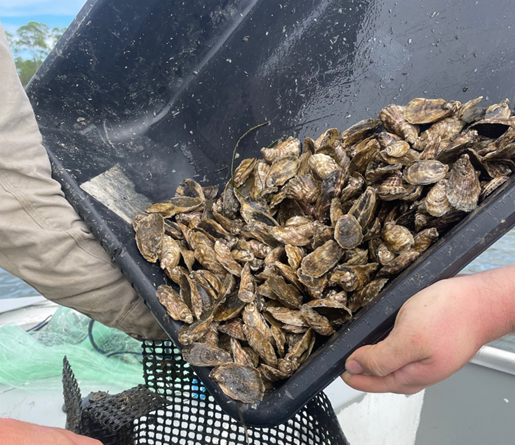Review of Oyster Shell Recycling Programs
 FSUCML’s Dr. Sandra Brooke partnered with The Pew Charitable Trusts to review 29 shell recycling programs along the eastern seaboard, the Gulf of America, and the Pacific Coast. While the programs largely vary in terms of funding, structure, and size, they all share a common goal – to obtain oyster shells for restoration purposes or the re-shelling of harvest areas.
FSUCML’s Dr. Sandra Brooke partnered with The Pew Charitable Trusts to review 29 shell recycling programs along the eastern seaboard, the Gulf of America, and the Pacific Coast. While the programs largely vary in terms of funding, structure, and size, they all share a common goal – to obtain oyster shells for restoration purposes or the re-shelling of harvest areas.
Traditionally, replenishing the shell removed from harvest is an important part of oyster management, but oyster shell has become increasingly rare. With most shells ending up at seafood retailers and restaurants, the purpose of shell recycling is to divert this resource from landfills and back into the estuaries from which they came. A key component of these programs is community engagement, to encourage local restaurants and the public to recycle shells for the restoration and conservation of these important ecosystems.
This report was conducted to provide recommendations for new and existing programs in Apalachicola Bay and other Florida locations. The oyster fishery in Apalachicola Bay in the Florida Panhandle was historically highly productive, providing up to 90% of the oysters in Florida. This fishery declined over time and in 2013 was declared a Federal Fishery Disaster. Restoration was initiated, but harvesting continued, the State re-shelling program was defunded, and the oyster populations continued to decline until 2020 when the fishery was closed for 5 years. There are indications that oysters are returning in some areas but population recovery may be accelerated through deployment of bare shell or the use of spat-on-shell to augment natural recruitment. Both of these options require large quantities of shell. There is currently a small recycling program in Apalachicola, managed by the OysterCorps (part of the AmeriCorps Conservation Corps). This review contains suggestions on how this program can be expanded, or new programs initiated to meet the need for shell cultch in the Florida Panhandle.

